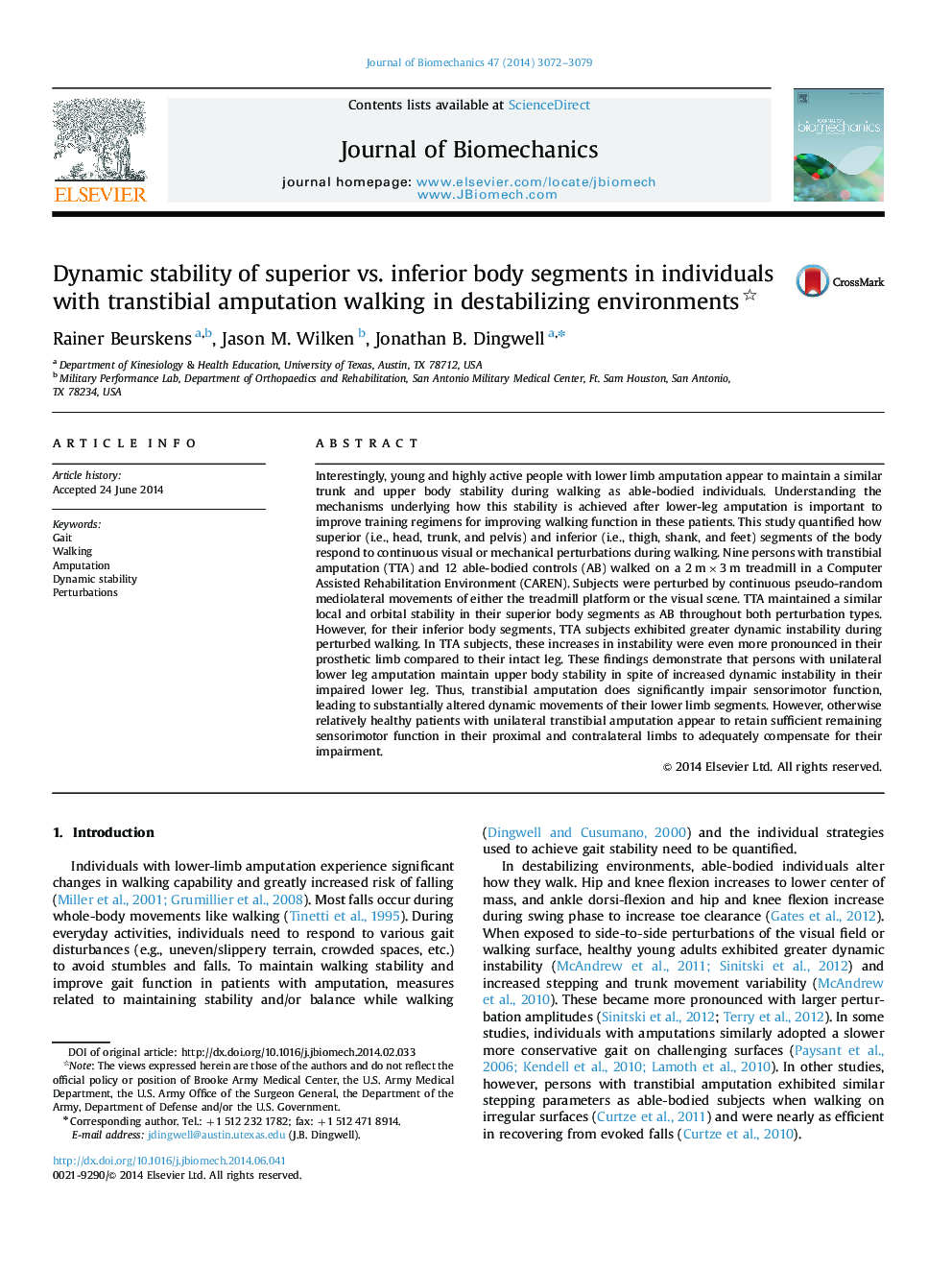| کد مقاله | کد نشریه | سال انتشار | مقاله انگلیسی | نسخه تمام متن |
|---|---|---|---|---|
| 10432123 | 910236 | 2014 | 8 صفحه PDF | دانلود رایگان |
عنوان انگلیسی مقاله ISI
Dynamic stability of superior vs. inferior body segments in individuals with transtibial amputation walking in destabilizing environments
دانلود مقاله + سفارش ترجمه
دانلود مقاله ISI انگلیسی
رایگان برای ایرانیان
کلمات کلیدی
موضوعات مرتبط
مهندسی و علوم پایه
سایر رشته های مهندسی
مهندسی پزشکی
پیش نمایش صفحه اول مقاله

چکیده انگلیسی
Interestingly, young and highly active people with lower limb amputation appear to maintain a similar trunk and upper body stability during walking as able-bodied individuals. Understanding the mechanisms underlying how this stability is achieved after lower-leg amputation is important to improve training regimens for improving walking function in these patients. This study quantified how superior (i.e., head, trunk, and pelvis) and inferior (i.e., thigh, shank, and feet) segments of the body respond to continuous visual or mechanical perturbations during walking. Nine persons with transtibial amputation (TTA) and 12 able-bodied controls (AB) walked on a 2Â mÃ3Â m treadmill in a Computer Assisted Rehabilitation Environment (CAREN). Subjects were perturbed by continuous pseudo-random mediolateral movements of either the treadmill platform or the visual scene. TTA maintained a similar local and orbital stability in their superior body segments as AB throughout both perturbation types. However, for their inferior body segments, TTA subjects exhibited greater dynamic instability during perturbed walking. In TTA subjects, these increases in instability were even more pronounced in their prosthetic limb compared to their intact leg. These findings demonstrate that persons with unilateral lower leg amputation maintain upper body stability in spite of increased dynamic instability in their impaired lower leg. Thus, transtibial amputation does significantly impair sensorimotor function, leading to substantially altered dynamic movements of their lower limb segments. However, otherwise relatively healthy patients with unilateral transtibial amputation appear to retain sufficient remaining sensorimotor function in their proximal and contralateral limbs to adequately compensate for their impairment.
ناشر
Database: Elsevier - ScienceDirect (ساینس دایرکت)
Journal: Journal of Biomechanics - Volume 47, Issue 12, 22 September 2014, Pages 3072-3079
Journal: Journal of Biomechanics - Volume 47, Issue 12, 22 September 2014, Pages 3072-3079
نویسندگان
Rainer Beurskens, Jason M. Wilken, Jonathan B. Dingwell,